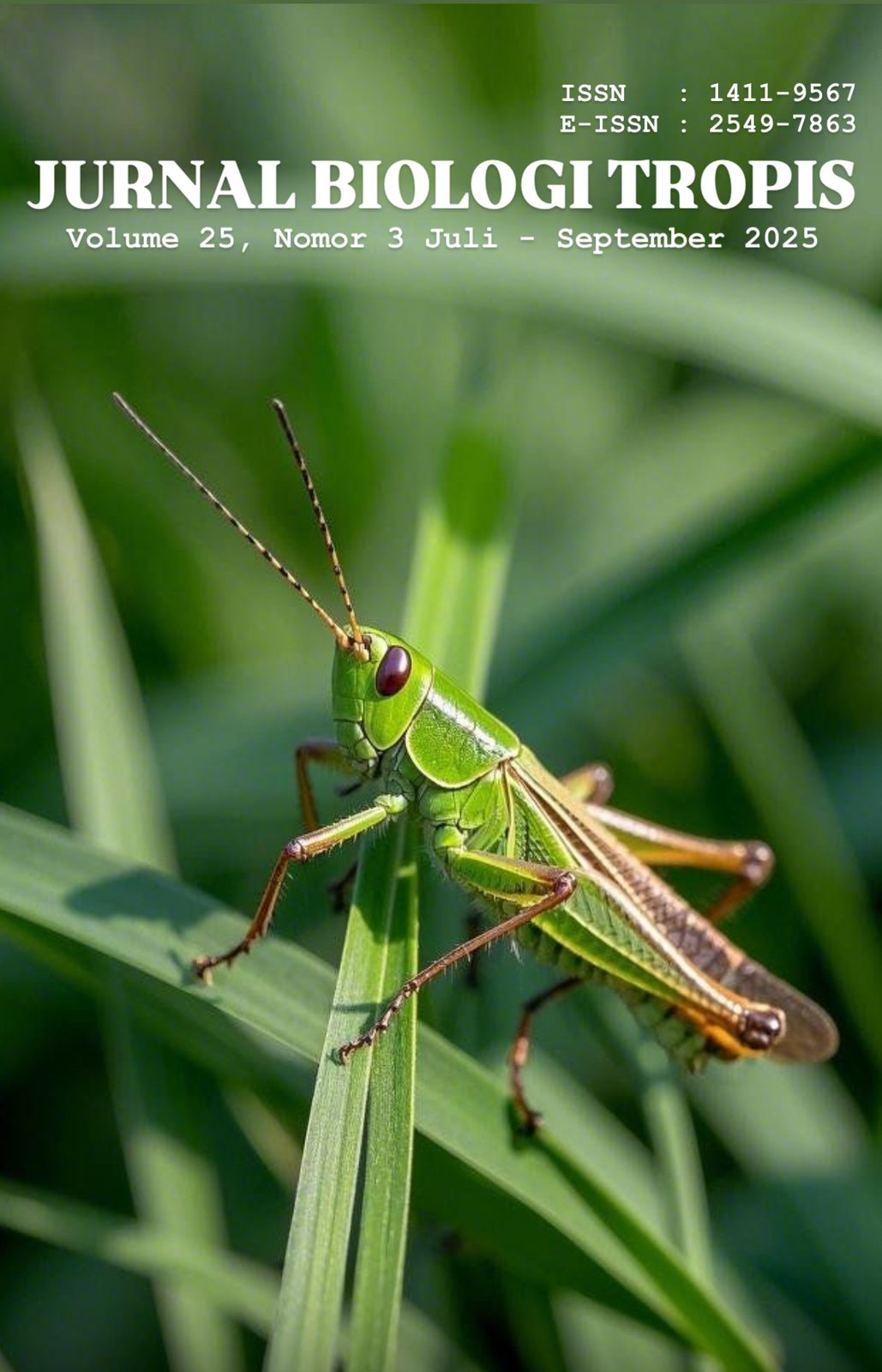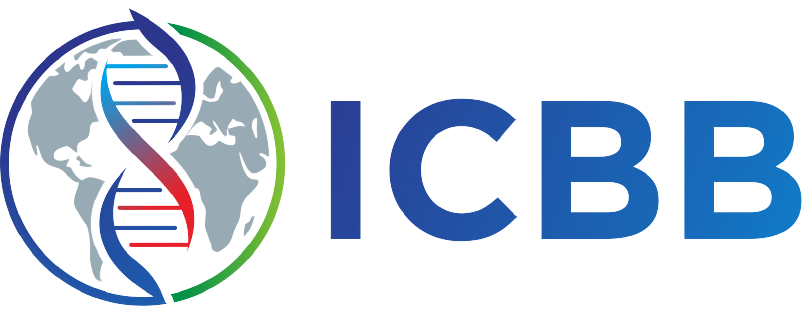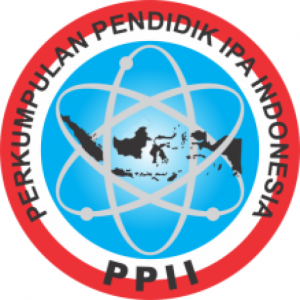Effectiveness of Non-SLS Shampoo Based on VCO and Tectona grandis Leaf Extract for Alopecia Treatment
Authors
Fadel Nugraha , Michelle Graciella Jacinta Halim , Naomi Chiko Putri Sihotang , Yudha Febrianto , Safniyeti Safniyeti , Nindya WulandariDOI:
10.29303/jbt.v25i3.9150Published:
2025-07-09Issue:
Vol. 25 No. 3 (2025): Juli-SeptemberKeywords:
Alopecia, hair loss, non-SLS shampoo, teak leaf extract, VCO.Articles
Downloads
How to Cite
Downloads
Metrics
Abstract
Hair loss is a common condition found in various groups. Various factors can cause hair loss, including genetic factors, hormonal imbalance, stress, nutritional deficiencies, and certain medical conditions. The type of disorder that occurs can be hair loss (effluvium) or hair loss disorders to baldness (alopecia). The study aims to determine the effectiveness of non-SLS shampoo preparations with a combination of teak leaf extract (Tectona grandis) and virgin coconut oil (Cocos nucifera) in overcoming hair loss and increasing hair growth rate. The shampoo preparation was tested on mice with 4 treatment groups consisting of 1 control group and 3 groups of mice that were given treatment (P1 containing 1,5% teak leaf extract and 0% VCO, P2 containing 2% teak leaf extract and 0,15% VCO, and P3 containing 2,5% teak leaf extract and 0,30% VCO). The trial on mice was conducted for 21 days and the calculation of the length of the mouse fur using a caliper was carried out periodically for 7 days. The results of study showed that the third formula showed an increase in the rate of hair growth. The effect of shampoo that showed most significant difference was P3 with 2,5% teak leaf extract and 0,30% coconut oil. Shampoo products containing teak leaf extract and coconut oil have been proven to have potential to increase rate of hair growth. This shampoo formula can also reduce hair loss supported by scientific journals reporting that teak leaf extract can inhibit work of steroid 5-α reductase (5SAR) and secretion of Interleukin-1 Beta (1L-1β), where both compounds have a negative impact on hair growth.
References
Bhavsar, R., Unhale, S.S., & Bilal, Q. (2020). Formulation and Development of Sulphate Free Sampo. IJRASET. 8(4):742-745. DOI:https://doi.org/10.35799/cp.13.1.2020.29604.
Chhetri, D.D., & Huang, X. (2021). Management of androgenetic alopecia: a review. International Journal of Research in Dermatology. 7(2): 321–326. DOI: https://doi.org/10.18203/issn. 24554529.IntJResDermatol20210013.
C. Rahangdale, P., & M. Wankhade, A. (2023). A Review on-Types and Treatment of Alopecia. Asian Journal of Pharmaceutical Research. 13(2):123-8. DOI: 10.52711/2231-5691.2023.00025.
Fakhrizal, M.A. & Saputra, K.H.. (2020). Potensi Daun Katuk dalam Mencegah Kerontokan Rambut. Jurnal Penelitian Perawat Profesional. 2(2): 193-200. DOI: https://doi.org/10.37287/jppp.v2i2.107.
Fukuda de Castilho, P., Oliveira, F. R., de Oliveira, G. B., Lavorato, J. A. A., dos Santos, J. E., Napoleão, T. H., ... & Paumgartten, F. J. R. (2021). General and Genetic Toxicology Studies of Aleurites moluccana (L.) Willd. Seeds In Vitro and In Vivo Assays. J Ethnopharmacol. 15(280):114478. DOI: 10.1016/j.jep.2021.114478.
Grymowicz, M., Rudnicka, E., Podfigurna, A., Napierala, P., Smolarczyk, R., Smolarczyk, K., & Meczekalski, B. (2020). Hormonal effects on hair follicles. International Journal of Molecular Sciences. 21(15):1-13. DOI: https://doi.org/10.3390/ijms21155342.
Harris, B. (2021). Kerontokan dan Kebotakan pada Rambut. Ibnu Sina: Jurnal Kedokteran dan Kesehatan-Fakultas Kedokteran Universitas Islam Sumatera Utara. 20(2):159-168. DOI: https://doi.org/10.30743/ibnusina.
Hidayah, N. R., Arfina, R., & Fitriani, D. (2020). Formulasi dan Evaluasi Sediaan Herbal Hair Tonic sebagai Perangsang Pertumbuhan Rambut. Majalah Farmasetika. 5(5):218-232. DOI: https://doi.org/10.24198/mfarmasetika.v5i5.27555.
Ittiqo, D. H., Ramadhani, N., & Wulandari, E. (2022). Uji Aktivitas Hair Tonic Madu Kombinasi Ekstrak Daun Seledri (Apium Graveolens Linn) Terhadap Pertumbuhan Rambut Kelinci Jantan. Jurnal Ilmu Kefarmasian. 3(1):55-60. DOI:https://doi.org/10.31764/lf.v3i1.7406
Jamerson, T. & Aguh, C. (2021). An Approach to Patients with Alopecia. Med. Clin. North. Am. 105(4):599-610. DOI: 10.1016/j.mcna.2021.04.002.
Jaybhaye, D., Patil, P., & Singh, D. (2010). Effect of Tectona grandis Linn. Seeds On Hair Growth Activity Of Albino Mice. Int. J. Ayurveda Res. 1(4):211–215. DOI:https://doi.org/10.4103/0974-7788.76783.
Juweni, D., Sari, M., & Putri, L. (2024). Pengaruh Pemberian Kombinasi Minyak Kemiri dan Minyak Kelapa Terhadap Pertumbuhan Rambut Bayi Di Pmb Juweni Samarinda. Jurnal Ilmu Kebidanan dan Kesehatan. 15(2):119-128. DOI: https://doi.org/10.52299/jks. v15i2.260.
Ma, Y.-Q., Sun, Z., Li, Y.-M., & Xu, H. (2023). Oxidative Stress and Alopecia Areata. Front. Med. 10:1181572. DOI: 10.3389/fmed.2023.1181572.
Maesaroh, I., & Meiliani. (2024). Analisis Kadar Sodium Lauryl Sulfate (SLS) pada Pasta Gigi Berbagai Merk dengan Metode Spektrofotometri UV-Vis. Jfarmaku. 9(1):31–37. DOI:10.55093/ jfarmaku.v9i1.439.
Nilam, N., Vitayani, S., Pramono, S.D., Mokhtar, S., & Fujiko, M. (2023). Pengaruh Penggunaan Hijab dan Frekuensi Keramas Terhadap Kondisi Kesehatan Rambut. Fakumi Medical Journal, 3(11):822-828. DOI: https://doi.org/10.33096/fmj.v3i11.414.
Nisrina, N., & Rosalina, L. (2020). Hubungan Perawatan Rambut dengan Kesehatan Rambut Mahasiswi yang Menggunakan Jilbab Di Jurusan Tata Rias dan Kecantikan Fakultas Pariwisata dan Perhotelan. Jurnal Tata Rias dan Kecantikan. 2(1):1-11. DOI: https://doi.org/10.24036/.v2i1.27.
Novia, D., Agustina, R., & Rahmawati, N. (2020). Skrining Fitokimia Ekstrak Etanol Daun Jati dan Infusa Daun Jati (Tectona Grandis L.S) dengan Metode Kromatografi Lapis Tipis (KLT). Jurnal Ilmiah Farmacy. 7(2):159-174. DOI: https://doi.org/10.52161/JIPHAR.V7I2.188.
Nurlatifah, A.S. (2021). Uji Aktivitas Ekstrak Etanol Daun Kecombrang (Etlingera elatior (Jack)R.M.Sm) sebagai Pertumbuhan Rambut Terhadap Kelinci Putih Jantan. JIF Farmasyifa 4(1):76-86. DOI: 10.29313/jiff.v4i1.6679.
Pravitasari, D. A., Wibowo, A., & Fitriani, D. (2021). Review: Formulasi Dan Evaluasi Sampo Berbagai Herbal Penyubur Rambut. Majalah Farmasetika. 6(2):152-168. DOI: https://doi.org/10.24198/MFARMASETIKA.V6I2.27629.
Quesada, S., Rodríguez, D., Cañueto, J., & Pérez-Losada, J. (2021). Cancer-Related Alopecia: From Etiologies to Global Management. Cancers 13(21):5556. DOI: https://doi.org/10.3390/cancers132 15556.
Riandari, T. M., Azhar, H., Oktaviani, R., & Pratiwi, A. D. (2023). Tinjauan Literatur Terbaru pada Terapi Herbal untuk Pengobatan Alepocia. Heal. Sci. Pharm. J. 7(2):80-86. DOI: https://doi.org/10.32504/hspj.v7i2.874.
Rizka, S. & Yuliana, Y. (2019). Pengaruh Penggunaan Buah Alpukat dan Virgin Coconut Oil (VCO) terhadap Perawatan Rambut Rontok. Jurnal Pendidikan dan Keluarga. 11(02):74- 85. DOI: http://dx.doi.org/10.24036/jpk/vol11-iss02/613.
Tibkawin, N., Somboon, T., Niamnuy, C., & Yoksan, R. (2021). Utilisation of Tectona grandis (teak) Leaf Extracts as Natural Hair Dyes. Coloration Technol. 138: 355–367. DOI: http://dx.doi.org/10.1111/cote.12594.
Tuo-Kouassi, N., Kouame, N. L., & Koffi, E. K. (2020). Physicochemical and Rheological Characterizations of Cocos nucifera L. and Elaeis guineensis Jacq.(Arecaceae) Oils for Black Hair Sampo Formulation. Int. J. Biol. Chem. Sci. 14(8):2684-2698. DOI: https://doi.org/10.4314/IJBCS.V14I8.3.
Wahyuni, S., Syahrial, A., & Nur, H. (2018). Kajian Aktivitas Antibakteri Ekstrak Etanol Daun Jati Belanda (Guazuma ulmifolia Lamk) terhadap Pertumbuhan Streptococcus mutans. Inovasi Teknik Kimia. 3(1):25-30. DOI:http://dx.doi. org/10.31942/inteka.v3i1.2122.
License
Copyright (c) 2025 Fadel Nugraha, Michelle Graciella Jacinta Halim, Naomi Chiko Putri Sihotang, Yudha Febrianto, Safniyeti Safniyeti, Nindya Wulandari

This work is licensed under a Creative Commons Attribution 4.0 International License.

Jurnal Biologi Tropis is licensed under a Creative Commons Attribution 4.0 International License.
The copyright of the received article shall be assigned to the author as the owner of the paper. The intended copyright includes the right to publish the article in various forms (including reprints). The journal maintains the publishing rights to the published articles.
Authors are permitted to disseminate published articles by sharing the link/DOI of the article at the journal. Authors are allowed to use their articles for any legal purposes deemed necessary without written permission from the journal with an acknowledgment of initial publication to this journal.


























